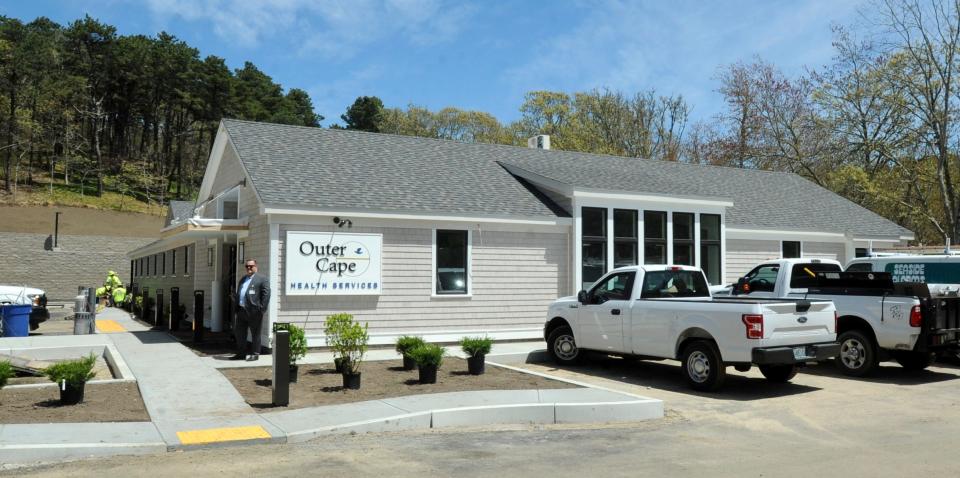Digital divide: New study finds disparities in access to telehealth services
With an unprecedented uptick in mental illnesses amplified by the COVID-19 pandemic and lockdowns, telehealth use spiked when in-person care was unavailable. But new research from the Harvard Pilgrim Healthcare Institute reveals there are disparities in who has access to telehealth services across Massachusetts.
The report, commissioned by the Massachusetts Association of Health Plans and Massachusetts Health Quality Partners, highlights the “digital divide” related to who has access to tech devices, digital literacy, financial means for broadband internet and reliable internet.

Researchers found that people who have a lower socioeconomic status — seniors, children and people living in rural areas — are less likely to use telehealth services. People facing financial difficulties, often communities of color where people may also require translation, have more difficulty getting the technology needed for proper care. Seniors are less likely to have the digital literacy skills to use telehealth properly, researchers found.
People residing in rural areas may not have the proper internet infrastructure, as is the case in some Massachusetts communities such as Chelsea, Fall River and Springfield.
Digital divide a main driver of disparity in telehealth access
Dr. Alon Peltz, lead researcher on the report and assistant professor at the Department of Population Medicine at Harvard Medical School, said he and his team of researchers were aware of the long-standing divide in internet access pre-pandemic and wanted to see how that manifested in health care services. The study’s findings confirmed earlier suspicions, he said, but still brought forth some shocking results.
“One of the things that were surprising to us all was that even after 2020 when life became so tied to virtual digital connection, the effects of the digital divide are still very much present today,” Peltz said. “There needs to be a basic level in which people and populations can access a digital medium in order to engage.”
Access to health care services:More rural access to telehealth is critical post-pandemic, advocates say
Even if households have the proper internet infrastructure to access telehealth appointments, researchers said, those who aren’t digitally literate — often seniors — don’t have the understanding to create a virtual appointment.
The report suggests health plans automatically conduct universal screenings for members who might need digital assistance. By helping them navigate the seemingly byzantine process, providers can close the digital divide and “facilitate more equitable telehealth access and support social, educational and economic advancement.”
Telehealth broadens access to diverse health care providers
The expansion of telehealth services, he said, provides patients with an opportunity to find a provider tailored to their needs by opening up access to providers outside of their area. But minority communities have long recounted their inability to find someone who can empathize with their situation in ways white providers often cannot.
“There are a lot of challenges in finding a therapist, or a mental health provider, one that you identify with, have a strong therapeutic relationship,” Peltz said. “Telehealth has created new avenues for broadening that diversity of a provider network to meet that cultural need of a member, and how you no longer have to think as much geographically where that provider is located and maybe get access in other ways.”
An integral part of finding a provider is communication, which can create another obstacle for people with language barriers — often communities of color.
Rebuilding America:Rebuilding America: Some telemedicine to continue post-pandemic on Cape
Elias Chavez, a 26-year-old graduate student at Boston University, was a telehealth user before the pandemic. He used the online therapy platform “Talkspace” to speak with a licensed mental health professional and said it yielded positive results.
But Chavez said had English been his second language, getting those same results would likely have been much more difficult.
To get matched "you have to use highly specified language about mental health and mental well-being, and it gets a little confusing because certain words may not translate or they might use idioms,” he said. “There would have been a lot of elements of guessing involved.”
Awareness of telehealth is key to accessing services
Aside from accessibility and affordability, awareness is another key component to closing the telehealth disparity gap. Finding ways to address this is what Peltz calls the “million-dollar question.”
Patients — especially families with children — need adequate knowledge of the telehealth process. Peltz said the experience should be as person-centered and inclusive as possible with shared decision-making between providers and patients about what best suits them and their family’s needs.
Feeding the Cape:Can a business model sustain a Cape Cod nonprofit that wants to eliminate food and nutrition insecurity?
“For a family that may have a lot of financial hardships to have to make those daily tradeoffs, like ‘Will this cost me more than it does in person? Do I take the bus there or do I need to pay for parking?’” Peltz said. “There’s a lot of personal preference around how and when to get care. I suspect if you were to ask me as a provider, you ask me as a researcher and then ask me as a parent, I might give you three separate answers.”
Lora Pellegrini, president and CEO of the Massachusetts Association of Health Plans, says the search for solutions is a work in progress.
“Our board is in a unique position to convene a public conversation and (to be) getting that reporting into the right hands,” she says. “Sharing it with elected officials and folks in the administration can help get the word out. There are opportunities to really leverage this information to make those important connections.”
Get the Cape Cod news that matters delivered to your inbox. Sign up for our free newsletters.
This article originally appeared on Cape Cod Times: Study: Socioeconomics factors create disparities in telehealth access

